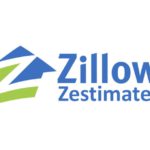For every landlord trying to simplify their process for collecting rent, tracking payments is an essential requirement. It’s one thing to collect passive income, but that’s only half of the battle. The other half is keeping track of it all in a comprehensive, easy, efficient way.
That’s where the best online rent collection and tracking platforms come in. These rent payment systems will automatically gather rent payments for landlords, organize receipts, and generate various reports automatically according to specifications set by the landlord.
Renters need to receive rent receipts upon payment, and landlords need to be able to track rent payments. In addition, it’s helpful for landlords when they can see updates in real-time and download or export these reports to various platforms and programs for bookkeeping purposes.
How to Track Rent Payments
Tracking payments accurately requires more than just “writing them down” somewhere.
Landlords must give confirmations and receipts at the time of the transaction, available funds should be verified, transaction fees should be documented in an organized way, and it should all be done without the landlord and tenant exchanging personal information.
Writing It All Down Manually
It is, of course, possible to track rent payments by writing notes on paper or in your phone’s notepad every month, but who has time to do that? It’s a difficult way to track rent payments.
The time and effort it would take would be extreme. Chances would be good that you’d not track important information either, and using this method doesn’t confirm receipt of anything like check receipts or online payment receipts do.
Using a Spreadsheet Program
Many people find that using a spreadsheet simplifies the rent payment tracking process and helps them keep everything more organized than jotting down notes on the phone or paper. Some popular spreadsheet solutions include Google Sheets, Quickbooks, and Microsoft Excel.
It’s recommended that landlords use one spreadsheet per property, so for those who own several different rental units and properties, managing multiple files can really become a hefty burden.
In addition, landlords would still have to manually enter all payment information every month on every sheet, a painstaking process that could waste a significant amount of time.
Using Rent Tracking Software, an App, or Website
Since they are unreliable ways to track rental payments and far too time- and effort-consuming, paper, phones, and spreadsheets are just not the best way to go.
A really good rental payment tracking app solves all of these problems, and then some. The best part is that they do it all automatically. Automating landlord tasks is not only convenient but in today’s digital world, it’s become a necessity.
Landlords and property managers no longer have to sit for hours to manually enter hoards of information. With these rent payment apps, they only need to set up an account and watch their most important tasks take care of themselves.
Some of the benefits of a good rent collection and tracking app or website include:
- Organization of tenant records
- Accounting capabilities to use for tax time
- Tenant expense monitoring and reporting
- Automation of rent payment collection and late fee assessment
- Automatic creation of billing/notice of rent due
- Financial reports at your fingertips
- Expense management tools
- Lease tracking capability
- Payment processing management
- Secure transactions with personal data protection
- The ability to export to spreadsheets automatically
When financial reports are needed, they can be automatically generated and on-hand whenever the landlord needs them. This function will be useful for tax time, litigation proceedings, eviction processes, and other routine landlord duties.
A nice perk for those who enjoy using spreadsheets (just not the time it takes to fill them out and keep them current) is the fact that the best apps, websites, and programs can export all relevant information right to different spreadsheet programs.
Work Smarter, Not Harder
The whole point of investing in rental properties is to minimize time spent on them while maximizing passive income. Rental payment collection systems that utilize features that track rent payments will make you feel like you have your own personal bookkeeper.
When you have all of this information organized in just one place, you will have a lot more time free to invest in other aspects of your life.










